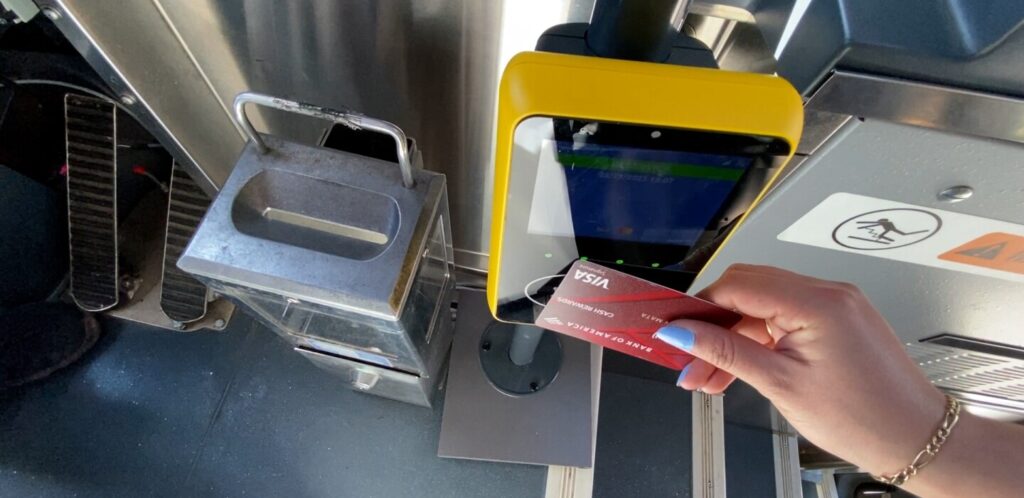Technological advances in transit fare payment are allowing residents to ride without cash as so-called “cashless riders,” paving the way for fairness programs like fare capping.
Coast RTA, a regional transit operator serving coastal South Carolina, has installed new “tap-to-cap” technology on 41 buses, which caps the maximum amount riders pay at $3.50 a day, regardless of the number of trips taken. The system uses contactless tap-to-pay credit or debit cards.
“Based on conversations with riders, all that's left is a monthly cap,” Coast RTA General Manager and CEO Brian Piersick said during a June 11 panel held by the U.S. Payments Forum, a policy and advocacy group focused on payments technology, discussing developments in fare payment technology.
On the idea of implementing a monthly fare cap in addition to a daily fare cap, Piastik said monthly passes used to offer such discounted fares, “but they still cost $40 or $50 up front, and a lot of people in that situation don't have that kind of cash lying around.”Coast RTA's “tap to cap” has been in place since September 2022.
Fare caps, which cap fares at a fixed amount for a set period of time, are often supported by transportation equity advocates as a way to curb rising transportation costs for low-income passengers.
But these programs rely on technology that can track transactions, something that wasn't possible in the old days of dropping money into a fare box.
Tap-to-ride fare payment systems like those used by Coast RTA rely on what's known in transit payment lingo as an “open loop” system, meaning riders don't need an app or transit-specific pass to pay their fare — they simply tap their bank card on a reader.
But open-loop systems go beyond fare capping: they can provide a rich cache of data that authorities can use to design incentives, loyalty programs and even routes.
“We can tell you pretty much everything about every trip, including where and when you got there,” Piastik said, noting that the data is “far better than what you can get from the fare box.”
“We've always used the fare system to count ridership,” he added, “but the data we get from an open-loop system is amazing, and there's so much of it I can't use it all.”
Gillian Gillette, head of data and digital services for the California Department of Transportation (Caltrans), said the government system has been slow to adopt the kinds of payment technologies that are prevalent everywhere else in the consumer world. Caltrans worked with its California Department of Transportation to advance fare payment technology across the transit system with the California Integrated Travel Project (Cal-ITP).
Cal-ITP provides participating agencies with dashboards and other resources to help them understand the benefits of open payments, and the technology allows transit agencies to track debit and credit card usage, “which tells you something about your customer,” Gillette said.
“You should look at things like how many of the payments you receive at a ticket machine are customers paying with Cash App or debit card,” Gillette said on the panel. “That tells you that a lot of people who you thought didn't have bank accounts probably do, so do they really need a ticket machine to make that transaction?”
New developments in areas such as digital driver's licenses, which can interoperate with digital fare payment systems, allow for quick and accurate verification of data such as age, disability and veteran status — all of which are often tied to transit discount programs. But currently, Coast RTA officials put little effort into verifying riders' ages and other details, Piastik said.
“We rely on other organisations to do it, or we just have the drivers do it by 'hand-feeding,'” he said. “For anyone who looks over 60, [discount] rate.”


